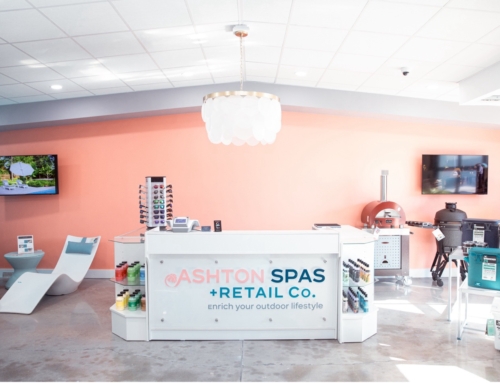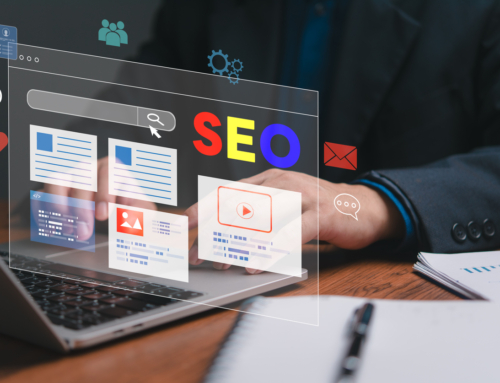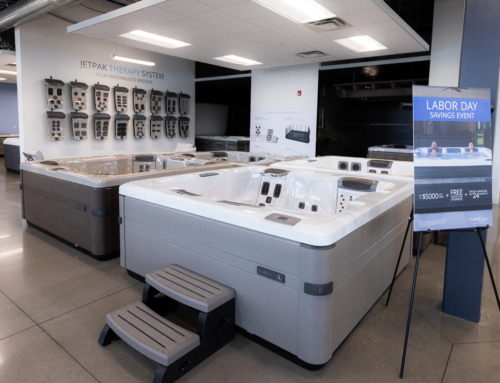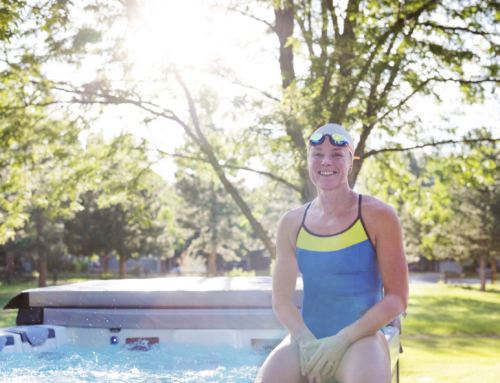With nearly a decade in the business, I can say I’ve seen many interesting changes. However, I don’t think I’ve ever seen the pace of change affecting retail in the way we’re seeing it today. If you’re looking to set new goals for your spa business, this list of trends and predictions can help.
Trend 1: It will be all about the shopping experience
The term “experiential” is getting applied to brick-and-mortar retail quite a bit these days. What it means is that it’s no longer good enough to just have a clean floor and stocked shelves. There’s no tolerance for a substandard shopping experience today. You must provide a “wow factor” of some kind in your store. There’s simply no reason for shoppers to leave the internet otherwise.
Think about your business, especially your retail store, in terms of the whole experience. From the moment your store comes into view as the shopper pulls up in their car, what are they experiencing?
- Is your sign professional, visible, and well branded?
- Is your parking easy?
- Is your storefront clean and vibrant? Does it offer a welcoming feel? Does it enhance your brand?
- Is your store decorated with a clean modern look, including a modern color scheme, decor accents, modern lighting, new furnishings, and bright displays?
- Is the brand experience inside your store consistent with your website, your signage, your advertising?
- Do you offer something truly unique to do while in your store? Test spas in private themed environments? VR experiences? Interactive product displays? Videos? Kids play areas?
- Is your store a warm and comfortable place to spend some time?
If you can’t answer “Yes” to these questions, you’re most likely losing business to competitors or other product categories, industries, and interests that provide better experiences.
In addition to the displays, product demos, and hi-tech experiences you provide in your store, it’s important to make the interpersonal part of the shopping experience pain-free. Customers already dread walking through the doors into the waiting jaws of a sales shark. Welcome them with a smile and give them some time to breathe. For example, a warm “Welcome to Carole’s Spas,” as the customer enters is a great way to greet shoppers. Let them know you’re there without the pressure of a demanding and frankly usually ridiculous question on them. Everybody knows if customers walk through the doors and don’t go right to the chemicals, they are there to shop for a spa. Make your conversation to the point, friendly, and helpful. If in their first interaction there’s the least bit of suspicion that it may be painful, they may not stay and won’t come back.
However, if you’re able to create a positive and comfortable shopping experience you can gain the trust of your shoppers, even skittish Gen Xers and Millenials.
Trend 2: A widening gap between spa retailers using technology and those who aren’t
This entire trend may be summed up by a reference to every sci-fi movie you’ve ever seen. Do you want to be the one that has to fight the robots of the future?
In most major markets, those spa retailers who are taking advantage of technology for marketing and operational efficiency are beginning to pull away from more traditional low-tech competitors. Here are some areas to watch.
Web
A web presence was important a decade ago. Today it is critical. And it is not enough for you to simply have a website. Your website must look clean and professional across a variety of screen sizes. That means incorporating responsive design.
Your website should be working for your business behind the scenes, helping you get found online. This means SEO efforts should include content marketing through blogging, off-page link building and citation efforts, and strategic use of semantic markup and metadata.
Your website should teach. As pool industry veteran turned marketing guru, Marcus Sheridan, puts it: It’s as simple as “they ask, you answer.” Your website should have all the answers to your customer’s most frequent and important questions. That means having a great FAQ page, then expanding on these answers with longer blog articles. FYI, this practice supports the SEO efforts mentioned above better than any other single strategy.
Your website should generate leads. If you don’t have a way for customers to input their information so you can contact them, you are falling behind. That means offering something as simple as an informational guide, price quote, or backyard consultation.
Apps
Apps are really simple. They are little programs that do one or more specific things. Spa dealers can declare war on paperwork and take advantage of apps for advertising, operations, accounting, and specific service functions.
Apps like Perch, Facebook’s Page Manager, and Hootsuite are great for social media monitoring and marketing. Hubspot, Mail Chimp, Yodle, and many others offer email and marketing automation. Canva is great for simple graphic design so you can put together your own ads and social promotional material. Gusto is great for HR/Payroll and Freshbooks is a really effective app for keeping your books. Square and several others offer mobile payment and credit card processing solutions. Companies like Evosus, DBX Software, RB Control Systems, and Wise Software all offer more specific solutions for spa business operations.
Use of apps across all areas is proving to increase efficiency, support accuracy, and improve communication in many spa businesses today.
Online listings
When I’m approached by spa dealers who are looking for something they can do today to get more business, this is the first thing I ask: How are your online listings? These are free places to list your business that help your SEO efforts. Make sure you’re listed on Google My Business, Bing Local, Yahoo, Yelp, YP.com, and all the others found at Moz.com/local. Other social network sites like Houzz, Facebook, Linkedin, and Pinterest also offer listing options and help your business get found. Again, they’re free, so not why put your business out there?
Voice search and chatbot discovery
Most spa dealers are probably not thinking about AI (artificial intelligence) and IOT (internet of things) much. But it’s coming to retail faster than you might expect. Have you seen commercials recently for products like Amazon’s Echo or Google Home. Combine these with Siri, Alexa and other voice-activated assistants and you can begin to imagine the relevance. Soon people will be getting most of their information not by typing in questions or keywords, but by simply asking for it. Voice-activated devices are helping people connect with their homes, appliances, cars, stores, and other people to do just about everything in daily life.
Spa retailers can take advantage of this surge in voice search by making your website’s voice friendly. Your FAQ page is a huge opportunity for you to answer every question on your site in a way voice assistants understand. Phrase your Q&A information in the way that someone would ask for it in normal casual speech and implement semantic markup to take advantage of voice queries. A good SEO agency can do this for you.
In addition to voice search, chatbots and shopping bots are surging in popularity and usefulness. A chatbot on your website basically answers questions about your business without forcing a web user to navigate all over your website. A shopping bot is something other businesses use to crawl your site and locate information about your products for their searchers.
Spa stores can think about using a bot to help customers, but a more effective and realistic short-term goal is to make your website information really good, make it really clear, and always use semantic markup and clear metadata to show other bots (Amazon, Google, etc.) exactly where to find the best info about you and your product.
If these opportunities sound too complex, get a quality SEO agency to start working for you. It won’t take long before you’re way out ahead of the competition.
Trend 3: Increasing difficulty keeping key employees
With unemployment at 4.6% at the time of this writing and continuing its downward trend it will be increasingly difficult to keep your best people. You simply must incentivize your staff to stay. It’s the reality of today’s labor market.
Not all of the incentive opportunities you have are financial. Many small businesses are revolutionizing the way people work with flexible schedules, the opportunity to work remotely where possible, profit sharing, or even ownership potential for your best people.
Russ Laraway, a former manager at Google and Twitter, has some incredible advice for keeping great employees…and it’s not just pay better. He emphasizes what he calls “radical candor” in how you talk around the workplace. This basically means be open, honest, and direct, never mean, but really direct. If you build this kind of positive environment, everybody will understand where they stand and where you stand. Your employees are much more likely to be inspired to make improvements when they feel completely comfortable. They become better employees, you become a better manager, and your workplace becomes a place people will want to stay.
According to Laraway, perhaps one of the most important things you can do to keep great people around longer is to share in their career planning. Sound counterintuitive? Actually, helping employees plan to get where they want to go in their career is your best opportunity to foster a fulfilling and productive relationship while building loyalty. Think big picture and provide opportunities for employees to learn and grow. There are simply too many great jobs out there for you not to be one of them.
Trend 4: Digital promotion will continue to be measurably more effective than other ad formats
Even though some reports show it to be on the decline due to the rising popularity of ad blocking software,search advertising (PPC) continues to be the most effective form of digital advertising. You simply must have a reasonable budget set aside for Google Adwords and Bing Ads pay-per-click ads. Target searchers in your area only and use compelling offers that create urgency. It’s wise to have your digital ads managed by an expert who can show you regular reporting of each ad’s effectiveness.
In addition to the requisite search marketing you need to be doing, social media advertising (not the free stuff you post to your page or profile) has come on really strong. For years we’ve been learning that social media is not like other advertising media. It’s not. With TV, radio, or print, attention comes via entertainment and we sneak an ad in there. With social media you have to actually get people to like you and your products. Luckily, they will like you if you’re doing it right.
Most importantly, even if only a small number like your business page, you can target their friends as well as other people in your area by what they already like. You might show ads to friends of current customers, to those in your area who like landscaping, or to those who have visited your website. Yes, all these targeting options exist. If you’re not actively promoting to those in your area who like your product category, those who like your page, and their friends on Facebook and other social platforms, you’re missing a real opportunity.
Trend 5: A shift towards a focus on Gen X and older Millenials for their buying power
It’s no secret that for nearly the entire existence of the product category, hot tubs have been sold primarily to Baby Boomers. While this aging generation remains a strong buyer of spas, the youngest boomers today are in their mid 50s. The upper end of this demographic are unfortunately reaching the end of their lives. While not as large as the Boomer generation, Generation Xers (age 34 to 55) are in the prime of their careers and their buying power. If you aren’t appealing to Generation X today, and even the older end of the Millenial generation, you must adapt.
Although they were born before the internet, Gen Xers today insist on technology in everything they buy. Cars need to be connected, homes need to be smart, and smartphone integration is a way of life. What technology are you offering in your products that will keep this generation happy?
Anyone at the Pool Spa Patio Expo in New Orleans last November couldn’t help but notice the proliferation of sensor-driven pool and spa water care products. Products like the Phin seemed to kick off this app-controlled water care category and at least four other similar products are now available to the public. Your customers will be asking for these soon and buying them direct if you aren’t offering them first.
One additional idiosyncrasy of Gen X is that they appreciate strong branding. These individuals grew up in the 80s and reached adulthood in the 90s, eras where brand was everything. Nike, Apple, and countless fashion brands became ubiquitous during this era.
If you’re not selling brands with a strong and unique story, as well as creating a strong brand of your own, you simply won’t be able to appeal to Generation X.These buyers are looking for smarter spas that offer more personalization and better efficiency. Without an identity and products to back it up you’ll be left in the cold as customers get their warm water experiences elsewhere.









Leave A Comment